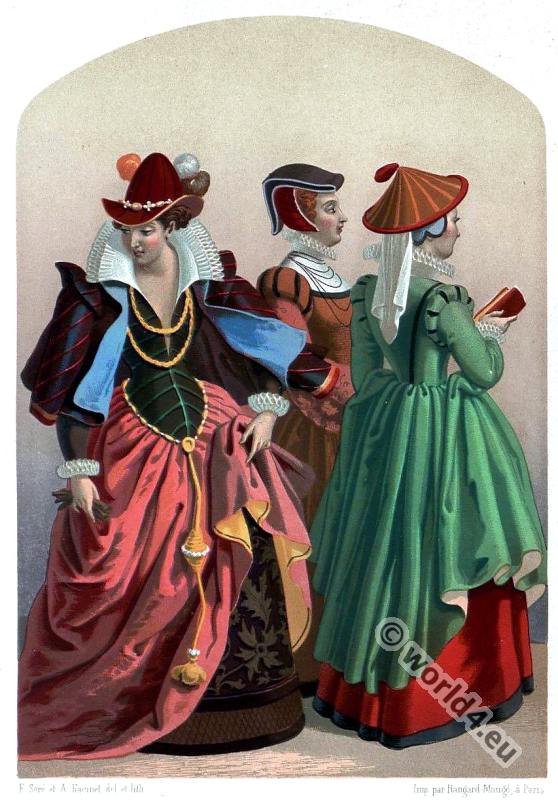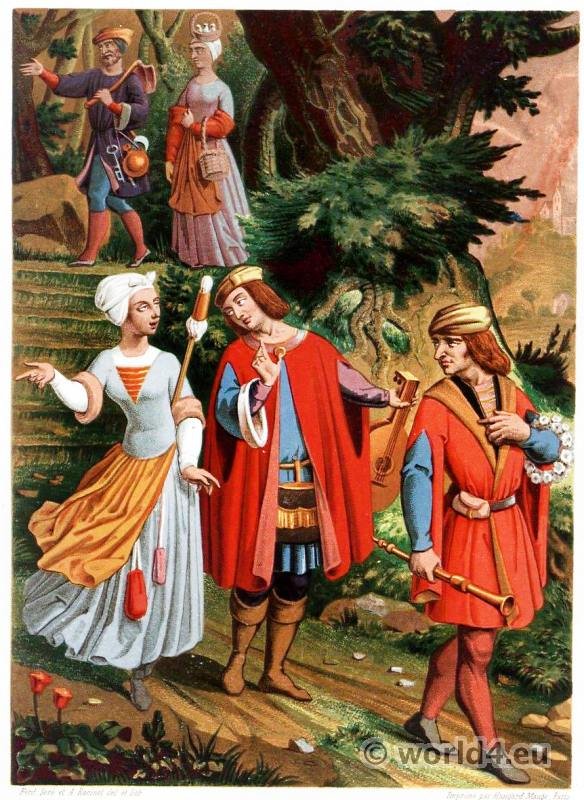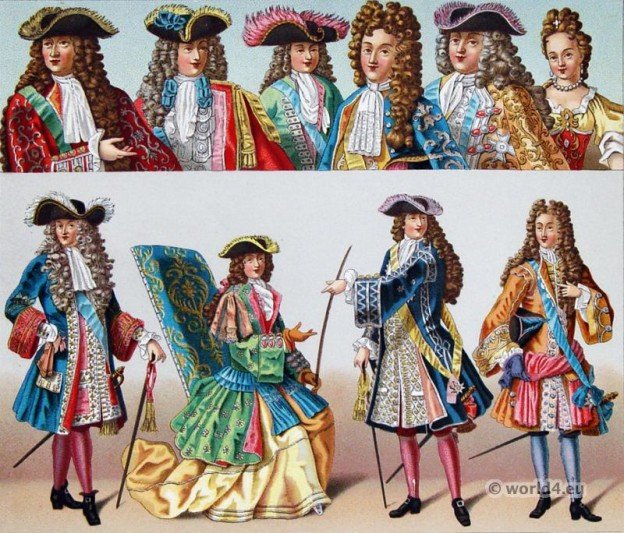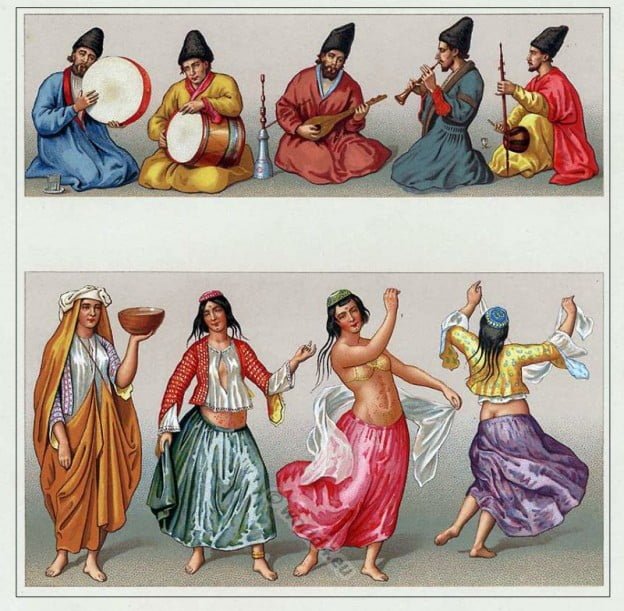On our board we reproduce in miniature an original Japanese picture showing the different phases of the clothing and equipment of an archer on foot. The picture seems to belong to the XVth century. In the 19th century the Japanese army was uniformed according to the European pattern.
Tag: Auguste Racinet
The Costume History in Chronological Development by Auguste Racinet. Edited by Adolf Rosenberg. Berlin 1888.
Embroideries and decorative objects of the Breton peasants.
Brittany. Traditional Jewellery. Embroidery of the chupen; the gouriz, the corquen. Antique bronze fibulae.
Historical Turkish male and female costumes from the european part.
Historical Turkish male and female costumes from the european part of the Ottoman Empire. The costume history by Auguste Racinet, 1888.
The sumptuary arts: Hat fashions of the Renaissance.
The sumptuary arts: History of costume and furnishings and related arts and industries.
France Gothic medieval dresses, 15th century.
France Gothic medieval dresses, 15th century. Extracts from the Danse Macabre. Costumes of Jailor, Menestrel, Fool, Bourgeois, Beggar, Pilgrim, Shepherd.
French Farmer and villager, maid, fiddlers in 15th century.
French Farmer and villager, maid, fiddlers in 15th century. Dance of the Dead. Medieval burial scene. Gothic period, late medieval costumes. Laboureur et villageoise; Chambrière; Ménétriers. MS. à la Bibl. Imp. de… Read More
Louis-seize. Fabrics. French Silks hanging patterns.
The silks, the designs for which form the subject of our plate, all come from that branch of French manufacture to which Golbert, under Louis XIV, gave so powerful an impulse
The characteristic features of the costume during the reign of Louis XIV.
The characteristic features of the French clothing from the last decades of the 17th century laid the foundation for the modern costume.
India. The Mughal Empire. Costume and fashion history.
The Fascination of the Indian costume and fashion history during the glorious time of the North Indian Mughal era.
The Motrebs. Persian dancer and musicians, 16th century.
In the lower part of the image three Persian dancers and a servant in the typical costumes are shown. The average dancer wearing a precursor of Raqs Sharqi belly dance costumes.










